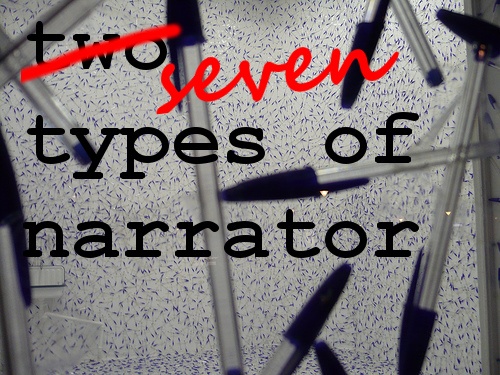
Photo by InterdimensionalGuardians. Interesting.
It’s the year 2053. Earth has made first contact with an extraterrestrial race; socialist aliens who reproduce asexually. You, now a literary giant, are tasked with adapting a sample of Earth literature for the aliens to enjoy. The book is Pride and Prejudice.
You open your well-worn copy to that famous first sentence, It is a truth universally acknowledged that a single man in possession of a large fortune must be in want of a wife…and you break down in tears, realizing this tale of class and marriage will mean absolutely nothing to your audience.
Universal truth, your foot!
Yet this is the challenge science fiction and fantasy writers face every day.
We create whole new worlds to house our stories, then find ourselves struggling to keep up the pace while stopping the action every few paragraphs for a history lesson.
But we don’t have to! With a few tricks of Show, Don’t Tell, we can show our readers a lot about our world without slipping into exposition. The close-up details of our heroes’ personal lives can reveal the big picture of the world they live in.
Like so:
1. Your protagonist’s job
…and the jobs of the people he knows say a lot about your world. If they’re all farmers, your readers see an agrarian community. Make him a moisture farmer in a desert, shopping for robots, and he’s Luke Skywalker. Or make him a starship repairman or a dragon breeder. Whatever the occupation, in one conversation with buddies at the pub about how hard work has been this week and what the government is up to, you can cover:
- The major industries of your world
- Who controls them / has the power
- The biggest problems with society
More useful tools along these lines:
- Living quarters (cave, tent, cryotube, barracks, fortress?)
- School/studies (from a blacksmith’s apprenticeship to a mind control science project)
- News reports (from the town crier announcing the war to a psychic message about falling nanobot stock prices)
2. Your protagonist’s relationships
How was he raised? Does he live with the wife and kids? The wives and kid? Seven generations of his family? Coworkers, classmates, cellmates, refugees? No one at all? This all reveals:
- The society in your world
- The structure of the family
- Barriers between the classes
3. Your protagonist’s traditions
Does he pray before he eats? Does he have to slay a beast to be acknowledged a man? When he attends a funeral, is he watching a body buried, burned, scattered, eaten, or recycled? Do they even have funerals? This reveals:
- Religion – who they worship, where they came from, where they go when they die
- History – holidays can be used to reenact important points in history
Traditions can include:
- Daily rituals: getting up, going to sleep, eating
- Life events: birth, coming-of-age, marriage, parenthood, funerals
- Holidays: festivals and fasts
*Pro tip: A liturgy, specifically words sung or recited at any of these events, can be an especially handy way to sneak in detail.
4. Your protagonist’s speech
Language, slang, shop talk, and industry buzzwords are all great tools to both plant clues and add personality to your world. For instance, your can make up your own:
- Terms of endearment or insult (honey, jerk)
- Titles (husband, wife, king, priest)
- Curse words (…)
- Greetings (hello, hi, good day, hey y’all, yo)
5. Use the appendices, Luke!
Your readers will usually be able to interpret casual references to foreign concepts by the context. But to include more detail, you can always add appendices at the back of the book. Tolkien and Herbert, renowned for their world-building in Lord of the Rings and Dune, both did it. Use footnotes to lead readers to things like:
- Glossary of terms
- Translations of foreign words
- Maps
- Summary of religion and history
What are some of your ideas for showing your world to readers? Tell me in the comments!
—
Thanks to Sky for suggesting this topic! If you have a writing question you want answered, leave it in the Suggestion Box!

Great show-don’t-tell world-building tips for sci-fi/fantasy writers.














